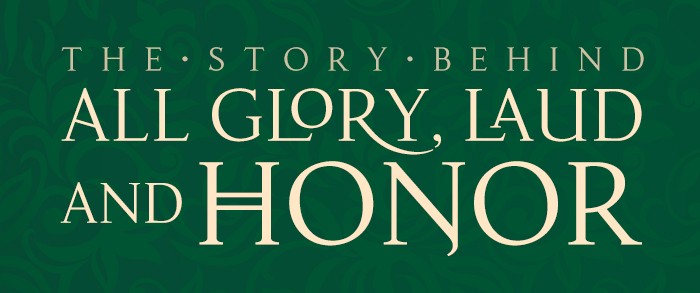It has long served as a classic on Palm Sunday, and the history behind All Glory, Laud and Honor is filled with intrigue. Behind the lyrics is a story of imprisonment and betrayal; behind the melody is praise from one of the most successful musicians to ever live.
Theodolph of Orleans was born in Spain in 760. He spent his life in dedication to God, writing poems and preaching sermons. Beloved by many, his influence eventually reached Charlemagne, the emperor of that age who attempted to revive the fallen Roman Empire. Theodolph and Charlemagne became close friends, and Charlemagne appointed Theodolph as Bishop of Orleans. Their friendship lasted many years until Charlemagne’s death in 814. Charlemagne’s son, Louis, took his place as emperor, and that is when life took a bad turn for Theodolph.
Louis, like many of the time, was paranoid of plots to overthrow him, and Theodolph came into the line of fire of this paranoia. In the same year as his father’s death, Louis imprisoned Theodolph in the monastery of Angers during a crusade to cut off all possibility of being overthrown. Theodolph largely spent the rest of his life imprisoned, and it was during this time that he wrote All Glory, Laud and Honor. Indeed, his dire circumstances brought forth a fuller appreciation of the promise of eternal life that awaited him.
Imprisonment did not treat Theodolph well, and he died seven years into it. However, legend says that before Theodolph’s death, Louis ended up releasing the once beloved Bishop of Orleans. According to the popular story, Louis had been walking near Theodolph’s cell and heard the bishop worshipping and praying. Upon hearing All Glory, Laud and Honor being sung by Theodolph, Louis was overwhelmed with regret for what he had done and quickly ordered Theodolph’s release. How truth of this story is uncertain, but what is certain is that the hymn found a way to spread far beyond Theodolph’s cell in the monastery of Angers.
The music for the hymn did not come until much later, in 1613. Melchior Teschner, a cantor in the German Lutheran Church, is responsible for the tune we know today. He wrote it upon request from Valerius Herberger, a well-known German preacher of those times. To say Teschner’s melody was well received is an understatement: Johann Sebastian Bach himself was so impressed by Teschner’s work that he took use of it in his St. John Passion.
Article ©2022 hymncharts.com. Contact us for permission to reprint.
Hymncharts subscribers: login to download an exclusive, shorter blurb suitable for a bulletin or other church publications.
Download All Glory, Laud and Honor:
Download sheet music, chord charts, tracks, multitracks and instrumental parts for All Glory, Laud and Honor exclusively with a hymncharts subscription. You won’t find this arrangement on any other website.



